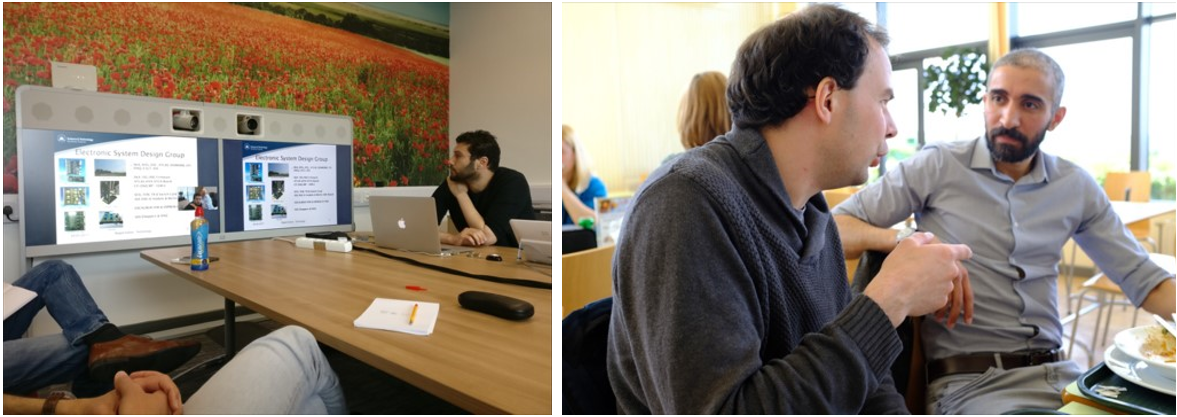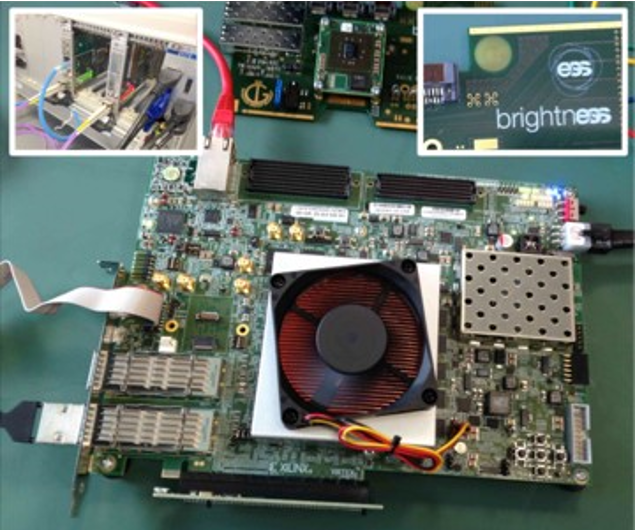Dialogue fosters fruitful detector and software collaboration

On Tuesday 9 May 2017, representatives from BrightnESS WP4 and WP5 met with STFC In-Kind partners at their laboratory in Daresbury, England for a joint meeting ”Detector Data Links to the DMSC”. The meeting focused on the network links that carry data between detector readout systems being developed by the ESS detector group (with partners) and the software based event formation unit being developed at the DMSC. Both the hardware of the links and the data protocol were discussed.
- The ESS will have a strong link between detectors and software. New detector technologies and challenging data rates lead to an integrated, holistic system view with software and electronics working together. ESS will exploit huge increases in commercial network link speeds that allow large volumes of raw data to be brought into an accessible software environment to maximize flexibility when processing into science data, says Scott Kolya, Detector Readout Team Leader.
The new challenges at ESS require new readout technology, and a new paradigm in data processing. The electronics and software must work hand in hand. Most facilities have established detector electronics, dating many years back.
- The new detectors for ESS have no existing electronics with equivalent functionality. This means that we have to deliver software at the same time as the detectors, speeding up the entire process, says Tobias Richter, Group Leader for Data Management at ESS and Head of BrightnESS WP5

Image: Top left is the control box crate with custom connection to timing, and the main picture is an Ultrascale+ Xilinx FPGA board.
The development of hardware and software is, by necessity, initially focused on very different aspects of the overall requirements, which poses a risk in terms of developing both technologies collaboratively. Having the Work packages in BrightnESS has helped to mitigate this risk, especially due to the high amount of communication, which has shown several other benefits to the project.
- This type of collaboration enables everyone to get a say in the process because of the continuous dialogue. In return, the process will be as efficient as possible and the performance of the detector-software interaction will be better, says Tobias Richter.
- BrightnESS has been invaluable in progressing the project, and is widely seen as a cornerstone of Science Directorate activity at ESS, says Scott Kolya
The Detector Data Links to DMSC meeting was held in Daresbury, where STFC have a large multidisciplinary research facility. STFC provides most of the personnel for the UK In-Kind delivery of detector readout technology, and ESS Detector Group have embedded a small team of engineers at Daresbury to ensure the best possible outcome from this in-kind work.




 is funded by the European Union Framework Programme for Research and Innovation Horizon 2020, under grant agreement 676548.
is funded by the European Union Framework Programme for Research and Innovation Horizon 2020, under grant agreement 676548.